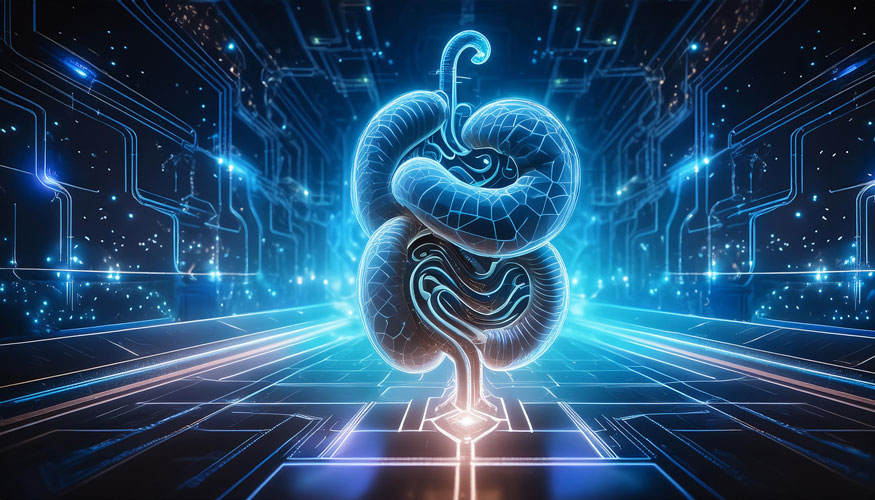In the realm of traditional Chinese medicine (TCM), the concept of chi, or qi, is fundamental. Chi is believed to be the vital energy that flows through the body along specific pathways called meridians. When chi is balanced and flowing smoothly, it promotes health and well-being, while blockages or disruptions can lead to various ailments. One of the key meridians responsible for facilitating the flow of chi is the Large Intestine Meridian (LI). In this article, we’ll delve into the significance of the LI meridian and its role in maintaining the harmonious flow of chi throughout the body.
Understanding Meridians in TCM
Before we explore the LI meridian, let’s briefly touch upon the concept of meridians in TCM. Meridians are like invisible channels or pathways through which chi circulates, connecting various parts of the body. There are twelve primary meridians in TCM, each associated with specific organs and functions. These meridians form a complex network that influences the physical, mental, and emotional aspects of health.
The Large Intestine Meridian (LI)
The Large Intestine Meridian, or LI meridian, is one of the twelve primary meridians in TCM. It is closely associated with the Large Intestine organ, but its influence extends beyond the physical organ itself. The LI meridian begins at the tip of the index finger, travels up the arm, crosses the shoulder, and runs along the lateral side of the neck before reaching the face. It then continues upward to the opposite side of the nose and terminates at the side of the nostril.

Functions of the LI Meridian
- Regulation of the Large Intestine: As the name suggests, the LI meridian is closely connected to the Large Intestine organ. It plays a role in regulating bowel movements and maintaining the health of the colon.
- Clearing Heat and Toxins: In TCM, the LI meridian is believed to have the function of clearing excess heat and toxins from the body. This is why acupuncture points along this meridian are often used to treat conditions such as fevers, sore throat, and skin eruptions.
- Facilitating Chi Flow: One of the most important functions of the LI meridian is its role in facilitating the smooth flow of chi throughout the body. When chi becomes stagnant or blocked along the LI meridian, it can lead to various symptoms such as constipation, abdominal pain, headaches, and even emotional irritability.
Importance for Chi Flow
The LI meridian serves as a crucial pathway for the circulation of chi, particularly in the upper body. Its trajectory along the arm, shoulder, and neck allows it to influence not only the physical functions of the Large Intestine but also the energy flow in these areas. When chi flows freely along the LI meridian, it supports healthy digestion, immunity, and overall vitality.
Balancing the LI Meridian
Maintaining the balance and smooth flow of chi along the LI meridian is essential for optimal health and well-being. Various TCM practices, such as acupuncture, acupressure, herbal medicine, qigong, and tai chi, can help to balance the LI meridian and address any blockages or imbalances that may arise. By harmonizing the flow of chi along the LI meridian, individuals can experience improved digestion, enhanced immune function, and a greater sense of vitality.
Meridian stretching exercises
Meridian stretching exercises can help to promote the flow of chi along specific meridians, including the Large Intestine Meridian (LI). Here’s how to perform meridian stretching to target the LI meridian:
- Preparation: Find a quiet and comfortable space where you can move freely without any distractions. Stand or sit comfortably with your spine straight and shoulders relaxed.
- Awareness: Take a moment to bring your awareness to your breath and your body. Allow yourself to relax and let go of any tension or stress.
- Focus on the LI Meridian Pathway: Visualize the pathway of the LI meridian in your mind. The LI meridian begins at the tip of the index finger, travels up the arm, crosses the shoulder, and runs along the lateral side of the neck before reaching the face. Focus on these areas as you perform the stretching exercises.
- Arm and Shoulder Stretches: Start by stretching the arms and shoulders to open up the LI meridian pathway. Here are a few simple stretches you can try:
- Shoulder Rolls: Roll your shoulders backward and then forward in a circular motion, focusing on loosening up any tension in the shoulder area.
- Arm Circles: Extend your arms out to the sides and make gentle circles with your arms, gradually increasing the size of the circles. This helps to open up the shoulder joints and stretch the muscles along the LI meridian.
- Cross-Body Arm Stretch: Bring one arm across your chest and use the opposite hand to gently press the arm closer to your body. Hold the stretch for 15-30 seconds, then switch sides. This stretch targets the muscles along the LI meridian in the arms and shoulders.
- Neck Stretches: Move on to stretching the neck to further open up the LI meridian pathway. Here are a couple of neck stretches to try:
- Neck Rolls: Slowly lower your chin towards your chest and roll your head gently from side to side, making a semi-circle motion. This stretch helps to release tension in the neck muscles and along the LI meridian.
- Side Neck Stretch: Tilt your head to one side, bringing your ear towards your shoulder. Use your hand to gently apply pressure to the opposite side of your head, increasing the stretch along the side of the neck. Hold for 15-30 seconds, then switch sides.
- Breathing: Throughout the stretching exercises, remember to breathe deeply and smoothly. Inhale deeply as you stretch, and exhale fully as you release the stretch. This helps to promote relaxation and enhance the flow of chi along the LI meridian.
- Repeat: Repeat these stretches several times, focusing on gentle and mindful movements. Listen to your body and avoid pushing yourself too hard. The goal is to gently open up the LI meridian pathway and promote the smooth flow of chi.
- Cool Down: After completing the stretches, take a few moments to relax and let your body integrate the benefits of the practice. You can also perform some gentle self-massage along the LI meridian pathway to further enhance chi flow.
By incorporating these meridian stretching exercises into your daily routine, you can help to open up the LI meridian pathway and promote overall health and vitality. Remember to listen to your body and practice mindfulness as you perform the stretches.
Conclusion
In conclusion, the Large Intestine Meridian (LI) plays a vital role in the circulation of chi throughout the body. By understanding its functions and significance, we can appreciate how maintaining the balance and smooth flow of chi along the LI meridian is crucial for promoting overall health and well-being in TCM philosophy. Incorporating practices that support the harmonious functioning of the LI meridian can contribute to a healthier and more vibrant life.



